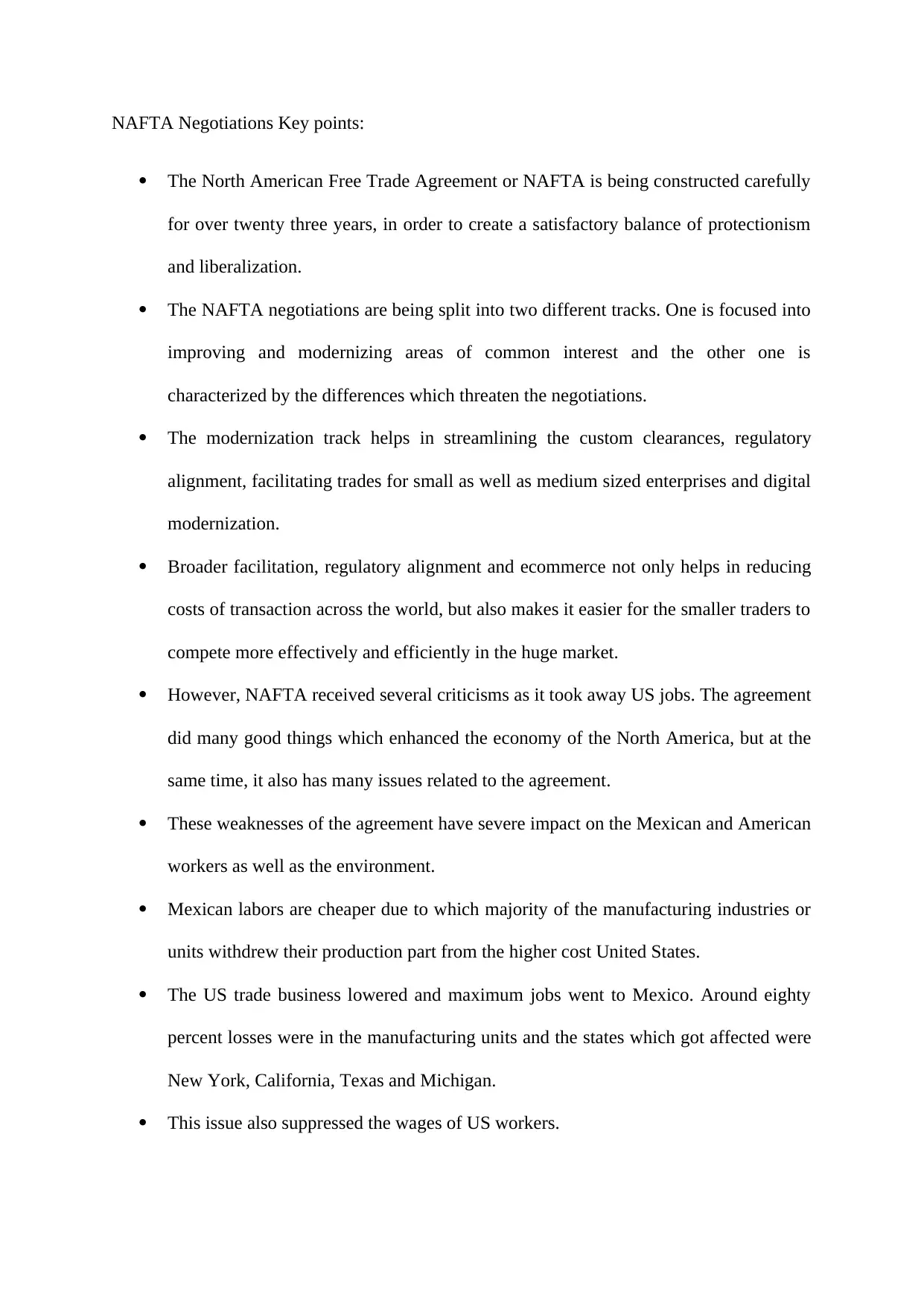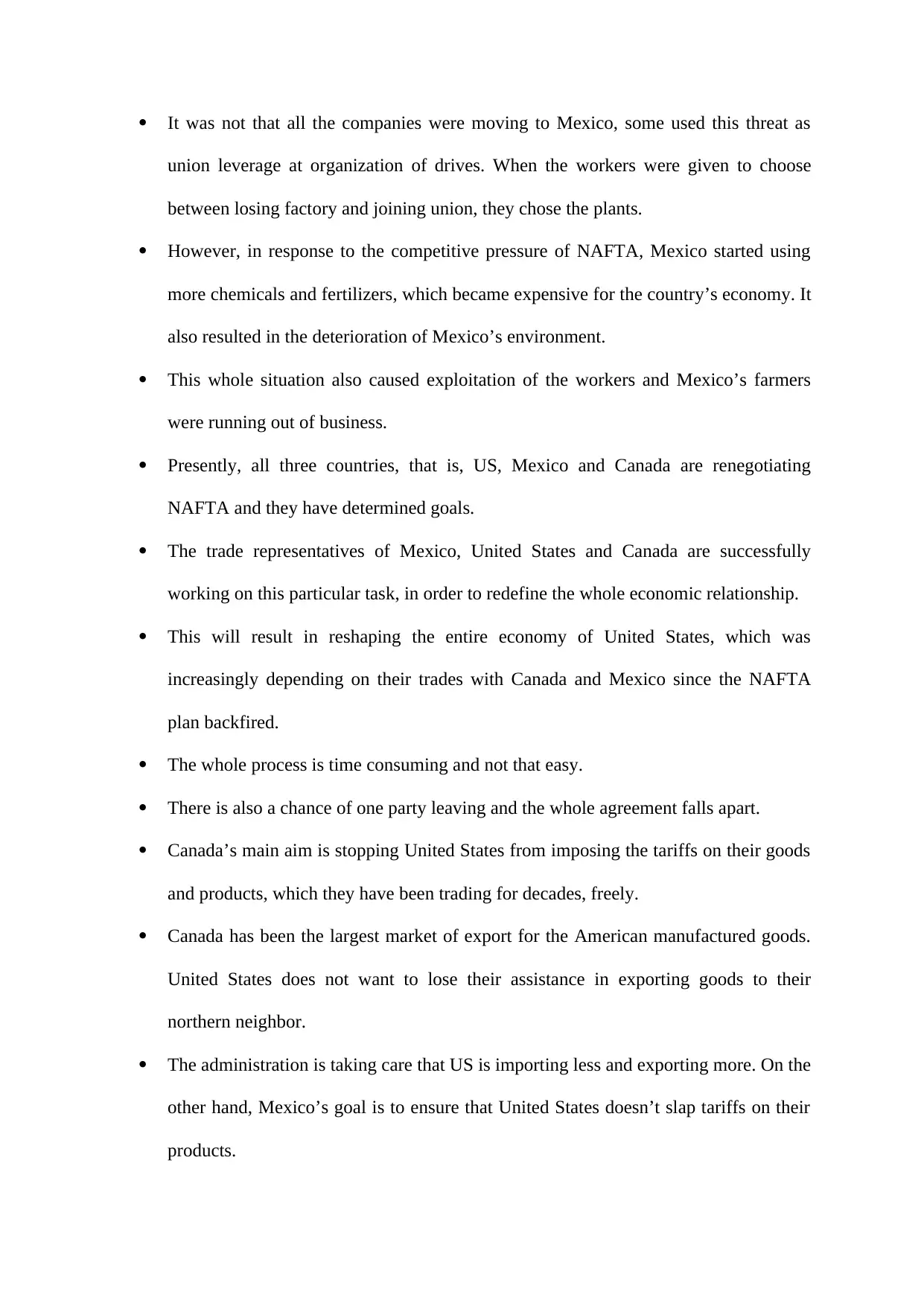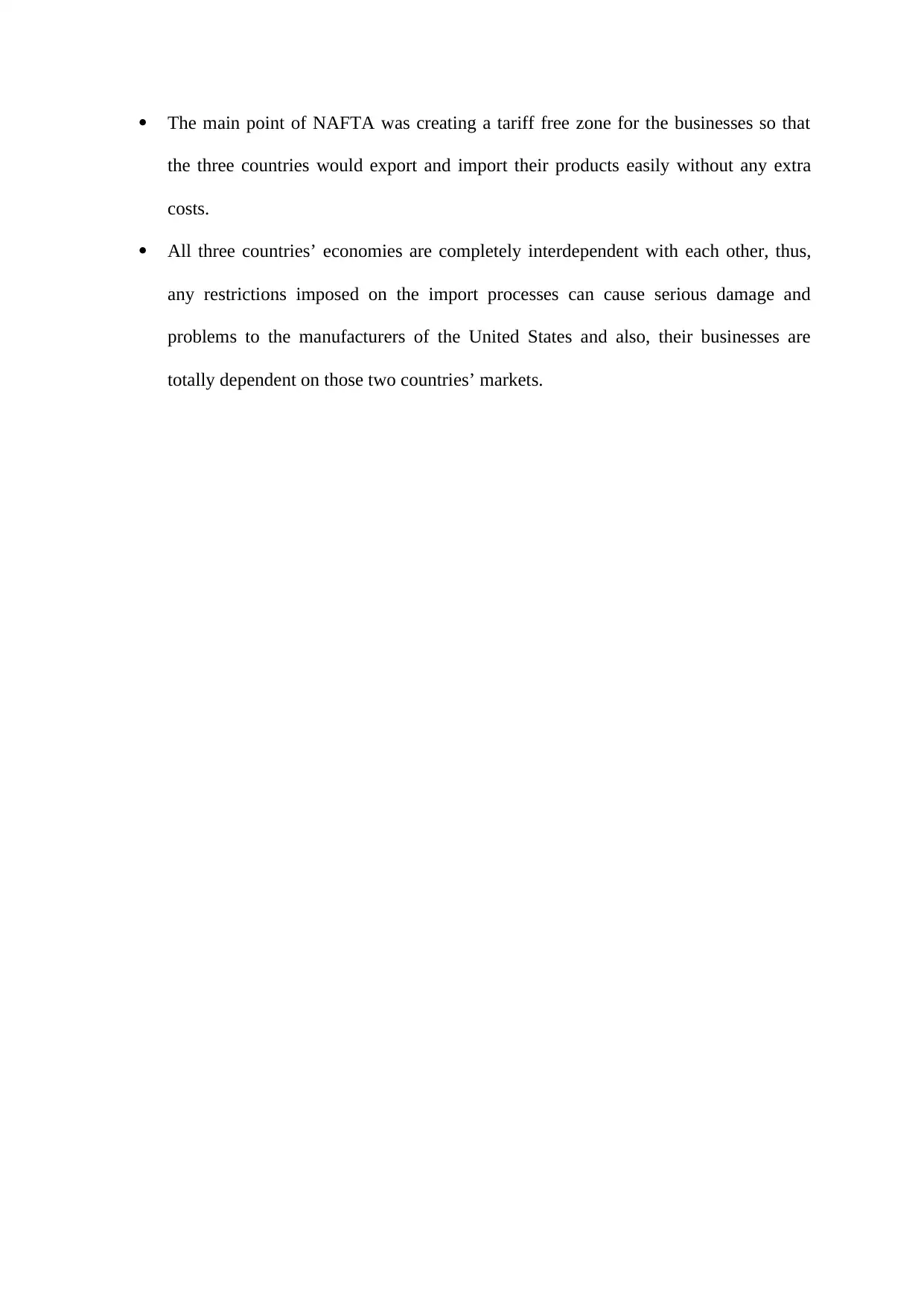An In-depth Report on the North American Free Trade Agreement (NAFTA)
VerifiedAdded on 2020/05/08
|3
|661
|85
Report
AI Summary
This report examines the North American Free Trade Agreement (NAFTA), delving into its historical context, objectives, and the roles of the United States, Canada, and Mexico. The report discusses the benefits of the agreement, such as the creation of a tariff-free zone, which facilitates trade between the three countries. It also explores the drawbacks, including the impact on jobs and the environment, particularly in the manufacturing sector. The report further analyzes the current renegotiations of NAFTA, highlighting the key issues, such as tariffs and market access, and the goals of each country. The report concludes by emphasizing the economic interdependence of the three nations and the potential consequences of any restrictions on trade. The report also discusses the challenges of the agreement and how it affects the countries involved.
1 out of 3










![[object Object]](/_next/static/media/star-bottom.7253800d.svg)